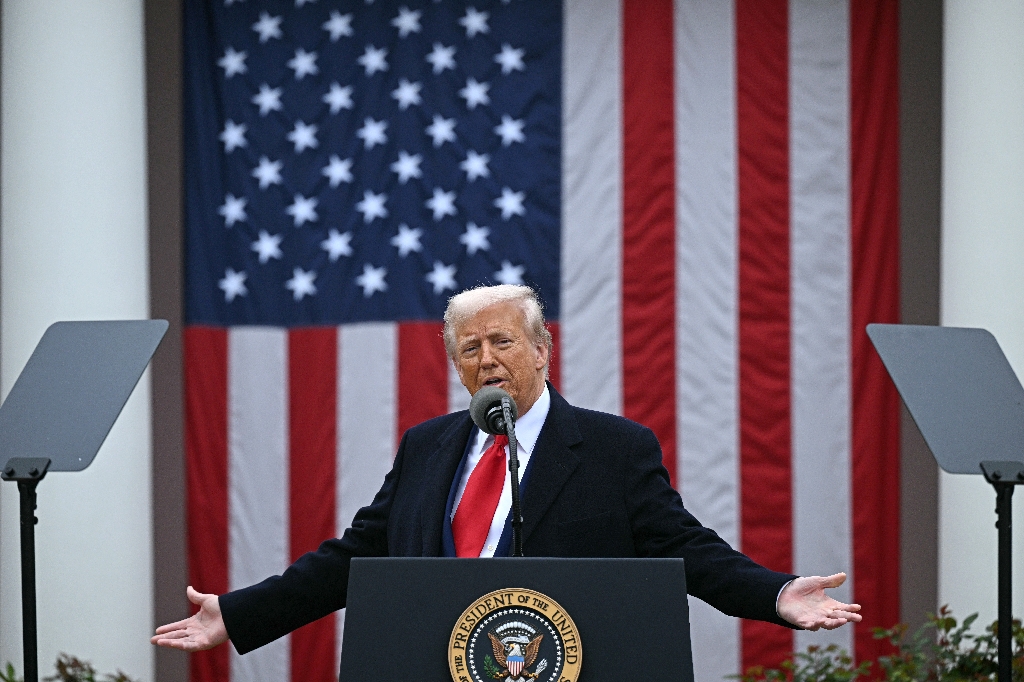(AFP) – Donald Trump will have almost complete control over the levers of US government now that Republicans have added the House of Representatives to their White House and Senate victories. He can rely on five key factors as he pushes through his populist America First agenda:
– **Democratic legitimacy** – Holding a more than three-million-ballot lead according to preliminary results, Trump was set to score an overwhelming victory in the popular vote against Democratic rival Kamala Harris. He was on course to be the first Republican president in 20 years to achieve the feat, once official results are certified. The 78-year-old secured a clear majority in the Electoral College, which decides the president, winning 312 electoral votes to Harris’s 226. Trump swept all seven swing states, winning in each of the battlegrounds that decide close US elections. Unlike with his victory in 2016, when Hillary Clinton won the popular vote, Trump will be able to claim greater legitimacy for pushing through his reformist agenda. “America has given us a powerful and unprecedented mandate,” he declared on election night. Mid-term elections in two years will be the next opportunity for Democrats to check Trump’s power.
– **Congress control** – On Wednesday, Republicans were declared the majority party in the US House of Representatives, completing their clean sweep in last week’s election. After more than a week of vote counting, CNN and NBC projected that Trump’s party had reached the 218 seats needed to retain their majority in the 435-seat lower chamber, having already seized the Senate from the Democrats. Having control of both chambers of Congress will ease the way for his nominations for key administration positions to be confirmed and may also allow him to push through his radical agenda of mass deportations, tax cuts and slashing regulations. Having purged the Republican Party of members not aligned with his “Make America Great Again” agenda, the president-elect can expect little internal resistance. Most legislation, however, requires a supermajority of 60 votes to progress in the Senate — a figure Republicans will not reach.
– **Government of loyalists** – As a political novice when he took office in 2017, Trump’s personnel choices largely consisted of seasoned Republican officials and military leaders. Given his unpredictable behavior, such moderating figures were dubbed by critics in the party and media as the “adults in the room.” For his second term, the billionaire real estate mogul has made no secret of his intention to surround himself with loyalists. His early picks have borne that out: he has named ally Marco Rubio as secretary of state, Fox News host Pete Hegseth as defense secretary, firebrand right-winger Matt Gaetz as Attorney General, and Elon Musk to head a government efficiency body.
– **Reshaped Supreme Court** – By appointing three deeply conservative Supreme Court justices during his first term, Trump helped anchor the country’s highest judicial power to the right. With its 6-3 conservative majority, the court has recently given Republicans a slew of judicial victories — most notably the overturning of the nationwide right to abortion in 2022. Two aging arch-conservatives, Clarence Thomas and Samuel Alito, aged 76 and 74 respectively, may consider retiring during Trump’s next term, enabling him to appoint two much younger replacements for life and cementing the court’s right-wing majority for decades.
– **Immunity** – The Supreme Court ruled this summer that presidents enjoy absolute immunity for “official” acts in office — a landmark decision viewed as unleashing the power of the presidency. The ruling stemmed from the federal criminal case brought against Trump over his attempts to overturn his 2020 loss to Joe Biden. Now that Trump has once again become president-elect, that case and others are expected to be thrown out, or abandoned.
– Sébastien BLANC
© 2024 AFP




